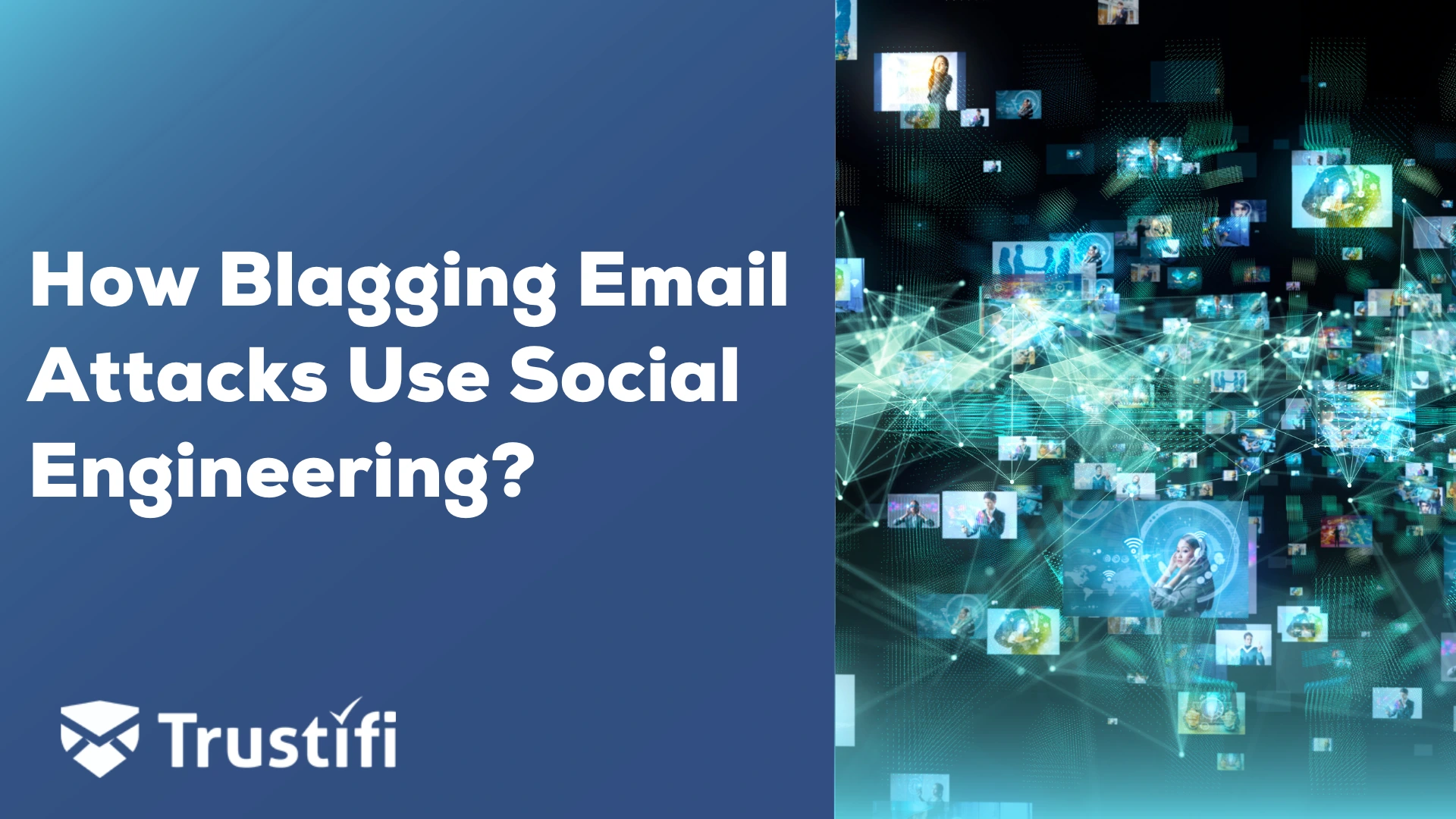
Blagging attacks often originate through social engineering techniques by preying on human error and innocence.
Trustifi, a global email artificial intelligence protection, understands how critical it is to stop blagging and phishing emails for their clients. Trustifi leverages artificial intelligence(AI) protection to help prevent blagging and phishing messages.
Types of Blagging Attacks.
Blagging attacks start with a common form of social engineering attack vector. Hackers will contact victims posing as familiar persons, including their boss, grandchild, or someone special they discovered while harvesting Facebook or other social sites. Using this “warm” connection and other sophisticated methods, hackers will send out various messages, including” You forgot my birthday, grandma,” to someone more direct, like “You forgot to pay your gas bill.”

Blagging attacks have claimed thousands of victims worldwide. Using WormGPT, hackers use these AI tools to create near-perfect email phishing messages, starting with the personal details captured by the social engineering attack vector.
Blogging and email phishing share common characteristics along with having differences. Blagging focuses on using social engineering to connect and impersonate someone close to the victim under pretenses. Email phishing follows the blagging attacks by taking the captured information and sending out content to a larger group of victims.
Attack Vectors Used By Cyber Criminals to Carry Out Blagging Attacks.
Email security measures already do a good job of stopping fraudulent messages. Stopping a blagging attack is far more complicated because the hackers first connect with the victims through text, voice, and in-person contact. Hackers and scammers will use impersonation techniques to create a conversation with their victims.

A common technique scammers use is building trust and advancing their impromptu false connection with the victim. Personal information learned from the blagging becomes content for the extended email phishing attack. The phishing attack is less likely to block email inbound filters by embedding personal information within the email message.
What Email Security Strategies Should Organizations Enable to Protection Against Blagging Attacks?
Security operations teams must continue driving employee awareness using data collected from recent attacks. Users suspecting they are becoming a target of a blagging social engineering attack should take the following steps to protect themselves:
- If you do not know the person contacting even if they have some basic knowledge of you, decline to speak to them.
- If someone refers to your child, sister, or friend, chances are the scammer learned this information by trolling your social media accounts.
- If a scammer seems too natural, challenge them with personal data like your dog’s name or your child’s favorite. If the person cannot reply promptly, hang up or walk away.
Scammers will take this opportunity to establish any form of connection to help with their email threats campaign.

Don’t give up any personal information to someone you do not know. Scammers will get everything from bank account details, home address, and mother’s maiden name.
Enabling Trustifi’s Global Email Security Platform to Block Email Phishing.
Stopping a blagging attack also helps protect the users from a well-crafted email phishing attack. Reducing the blagging attack vector helps lessen the organization’s cybersecurity risk. However, hackers will continue to use AI-enabled hacker tools, including WormGPT and FraudGPT, to launch very aggressive email phishing campaigns based on data captured through blagging.
Trustifi, a global AI-powered email security platform, leveraged its experience blocking email phishing attacks. Their advanced inbound filtering capability leveraged a mature and well-developed AI engine designed to stop next-generation email phishing messages, even with ones created from blagging content.
The email is scanned for phishing attacks in 3 parts and has a unique and advanced approach for each part.
Trustifi’s Inbound Shield is installed in your company’s email system, using advanced AI-based phishing protection software to scan all incoming emails. Each email becomes examined in a secure environment, with the anti-phishing solutions of Inbound Shield assessing various elements such as the sender, subject, content, links, and attachments. All organization emails must pass all phishing protection tests. Learn more about our enterprise email security solution and how we can help protect your email system.
Why Trustifi?
With their market-leading AI protection filters, domain impersonation protection, and message encryption, Trustifi simplifies email security while delivering exceptional security protection with their consolidated cloud-based platform.
As a global cybersecurity provider of both inbound and outbound email protection, Trustifi currently supports customers from countries including the USA, Canada, Brazil, the Dominican Republic, the UK, the Netherlands, India, the UAE, China, and Japan, Cyprus, the Philippines, and more. The company has also developed “One-Click Compliance” capabilities that cater to world security regulations, including PDPO for Hong Kong, POPI for South Africa, GDPR for Europe, and LGPD for Brazil.



